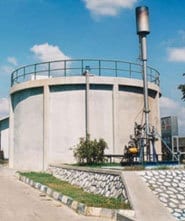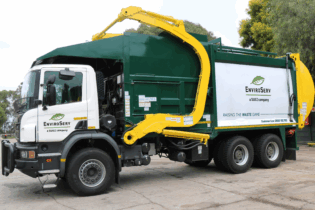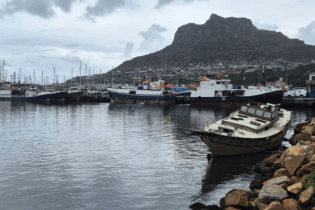Converting effluent into energy is relatively new technology in South Africa but more and more municipalities and private companies are starting to realise the enormous benefits. The latest organisation to embrace the technology is Stellenbosch-based maker of fine wines and spirits, Distell.
Distell is commissioning Veolia Water Technologies, South Africa to design, build and operate South Africa’s first trademarked Biobulk wastewater treatment facility. The plant will be ready for commissioning in March next year. From this point, a 10-year build, operate and transfer agreement will come into force. Going green Distell has three operational sites in the Stellenbosch area and, over the last four years, has developed a green plan which involves the installation of a typical anaerobic water treatment facility. The aim is to lower the chemical oxygen demand (COD) load in the outfall to the municipality, harvest the energy by reusing wastewater and lower the overall cost of effluent treatment. Veolia will treat 1 000 cubic meters of effluent per day with an organic load of 8.6 tons COD per day. The treated water will be discharged to the municipal wastewater works. During the process of anaerobic digestion, COD is converted into biogas, which will be transferred from the Biobulk facility directly to the biogas boiler. The final effluent discharged to the municipality will contain less than 500 kg COD per day and the suspended solids concentration will be less than 150 milligrams per litre (mg/l). Veolia opted for its Biobulk Continuous Stirred Tank Reactor technology, a green technology with a proven process that treats industrial effluents with significant amounts of suspended solids. Following an anaerobic suspended bacteria treatment process, the majority of the soluble and solid organic content, measured in COD, is converted into biogas. The Biobulk facility can be operated as a once-through system or biomass can be returned after a clarification stage.Design optimisation
The key to the system’s design is the way the reactor vessel is mixed and the design of the degassing stage prior to clarification. The biogas is a source of renewable energy and converted into steam for the Distell site. “This system represents a long term capital savings investment,” says Jaco Oosthuizen, technical manager of the industrial division at Veolia Water Technologies, South Africa. “It provides an operating cost saving as solids in the effluent do not need to be removed, but can be converted to biogas (energy) in the reactor instead.” The Biothane Biobulk anaerobic digester, known as the heart of the plant, will treat the effluent in this plant. The digester reduces the effluent COD content by 94.1% and then a clarifier removes suspended solids. This is followed by Veolia Hydrotech drum filtering for tertiary treatment, which ensures the total suspended solid (TSS) concentration is less than 150 mg/l. Ancillary equipment for the heart of the plant includes storage buffer tanks, clarifiers, the centrifuge, boiler and biogas flare. The 10-year BOT contract will enable Veolia to assume full ownership of the plant’s functions for the agreed period and ensure an appropriate transition from Veolia’s commissioning teams to its operations team. “Once the plant has been commissioned it will be handed over to our operations and maintenance division in the Western Cape, which will perform all operations and maintenance functions for 10 years,” Oosthuizen explains. Veolia’s operation and maintenance personnel, along with Veolia engineers from Biothane Netherlands, who developed the Biobulk solution, will form part of the commissioning team. Veolia’s operational personnel will be trained, via on-the-job coaching and theoretical training modules, to take over full plant responsibility.







